
Research
On s'habitue, c'est tout.
I'm mostly interested in higher dimensional contact geometry. In contrast to the 3-dimensional case, this is a relatively unexplored area with many basic questions unanswered. Recently though this direction has attracted a lot of attention by several new and unexpected discoveries (e.g. the notion of loose Legendrian knots and the existence of contact structures on any almost contact manifold).
From 2010 to 2013, my research has been partially funded by the ANR project Higher dimensional contact topology.
Video lectures: I have recorded a few video lectures on the proof of non-displaceability of exact Lagrangian submanifolds given by Gromov in his paper from 85. I would be interested in any feedback. You can watch them here:
Trivia: My research area is a subdomain of
Symplectic geometry. Apart from the mathematical
definition, I do not have any clue what "symplectic"
actually means, but on a trip to Asia, I learned that the Chinese
character for "symplectic" is
"辛", because that
character is pronounced sin-plectic.
The standard meaning of "辛" is "hot, spicy", so that at least in China I'm a hot geometer...
Nonfillability and Overtwistedness
|
For many years my work was centered around non-fillability questions, and ideas on how to generalize the notion of overtwisted to higher dimensions. The bLob (being an acronym of "bordered Legendrian open book") was such a conceivable generalization of the overtwisted disk. First examples of closed manifolds containing a bLob were found by Francisco Presas, and soon afterwards it was discovered that any contact manifold can be modified to admit such a submanifold. By now due to the work of Borman-Eliashberg-Murphy a definition of overtwistedness is known that implies flexibility which settles the question of overtwistedness in higher dimensions at least on the theoretical level. An article by Casals-Murphy-Eliashberg then shows that many of the previous conjectural definitions of overtwistedness are in fact equivalent to the one by Borman-Eliashberg-Murphy. The general opinion these days is that the most workable definition of overtwistedness consists in regarding stabilizations of overtwisted 3-manifolds first introduced in the joint paper with Fran Presas. |

|
Group actions on contact manifolds, symplectic orbifolds, open books
A second part of my work uses more geometric methods like group actions, branched covers, resolution of orbifolds, and open books.
Articles:
2019
| Sam Lisi Aleksandra Marinković Klaus Niederkrüger Some properties of the Bourgeois contact structures Algebr. Geom. Topol. 19 (2019) 3409-3451. |
|

|
The Bourgeois construction associates to every contact open book on a manifold V a contact structure on V×T2. We study in this article some of the properties of V that are inherited by V×T2 and some that are not. Giroux has provided recently a suitable framework to work with contact open books. In the appendix of this article, we quickly review this formalism, and we work out a few classical examples of contact open books to illustrate how to use this language. |
2016
| Patrick Massot Klaus Niederkrüger Examples of non-trivial contact mapping classes in all dimensions Int. Math. Res. Not. IMRN (2016), Issue 15, 4784-4806. |
|
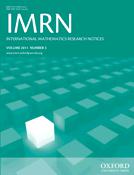
|
We give examples of contactomorphisms in every dimension that are smoothly isotopic to the identity but that are not contact isotopic to the identity. In fact, we prove the stronger statement that they are not even symplectically pseudo-isotopic to the identity. We also give examples of pairs of contactomorphisms which are smoothly conjugate to each other but not by contactomorphisms. |
| Paolo Ghiggini Klaus Niederkrüger Chris Wendl Subcritical contact surgeries and the topology of symplectic fillings Journal de l'École polytechnique, Tome 3, 2016, p. 163-208 |
|
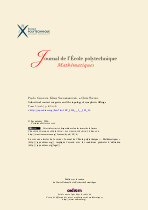
|
By a result of Eliashberg, every symplectic filling of a three-dimensional contact connected sum is obtained by performing a boundary connected sum on another symplectic filling. We prove a partial generalization of this result for subcritical contact surgeries in higher dimensions: given any contact manifold that arises from another contact manifold by subcritical surgery, its belt sphere is zero in the oriented bordism group ΩSO∗(W) of any symplectically aspherical filling W, and in dimension five, it will even be nullhomotopic. More generally, if the filling is not aspherical but is semipositive, then the belt sphere will be trivial in H∗(W). Using the same methods, we show that the contact connected sum decomposition for tight contact structures in dimension three does not extend to higher dimensions: in particular, we exhibit connected sums of manifolds of dimension at least five with Stein fillable contact structures that do not arise as contact connected sums. The proofs are based on holomorphic disk-filling techniques, with families of Legendrian open books (so-called "Lobs") as boundary conditions. |
2013
| Emmy Murphy Klaus Niederkrüger Olga Plamenevskaya András Stipsicz Loose Legendrians and the plastikstufe Geom. & Topo. 17 (2013) 1791-1814 |
|

|
We show that the presence of a plastikstufe induces a certain degree of flexibility in contact manifolds of dimension 2n+1>3. More precisely, we prove that every Legendrian knot whose complement contains a "nice" plastikstufe can be destabilized (and, as a consequence, is loose). As an application, it follows in certain situations that two non-isomorphic contact structures become isomorphic after connect-summing with a manifold containing a plastikstufe. |
| Patrick Massot Klaus Niederkrüger Chris Wendl Weak and strong fillability of higher dimensional contact manifolds Invent. Math. 192 (2013), Issue 2, pp. 287-373 |
|
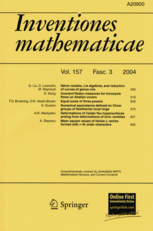
|
For contact manifolds in dimension three, the notions of weak and strong symplectic fillability and tightness are all known to be inequivalent. We extend these facts to higher dimensions: in particular, we define a natural generalization of weak fillings and prove that it is indeed weaker (at least in dimension five),while also being obstructed by all known manifestations of "overtwistedness". We also find the first examples of contact manifolds in all dimensions that are not symplectically fillable but also cannot be called overtwisted in any reasonable sense. These depend on a higher-dimensional analogue of Giroux torsion, which we define via the existence in all dimensions of exact symplectic manifolds with disconnected contact boundary. |
2011
| Klaus Niederkrüger Chris Wendl Weak Symplectic Fillings and Holomorphic Curves Annales scientifiques de l'ENS 44, fascicule 5 (2011), 801-853 |
|
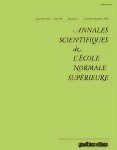
|
We prove several results on weak symplectic fillings of contact 3-manifolds, including: (1) Every weak filling of any planar contact manifold can be deformed to a blow up of a Stein filling. (2) Contact manifolds that have planar torsion with an extra homological condition are not weakly fillable -this gives many new examples of contact manifolds without Giroux torsion that have no weak fillings. (3) Weak fillability is preserved under splicing of contact manifolds along symplectic pre-Lagrangian tori - this gives many new examples of contact manifolds without Giroux torsion that are weakly but not strongly fillable. We establish the obstructions to weak fillings via two parallel approaches using holomorphic curves. In the first approach, we generalize the original Gromov-Eliashberg "Bishop disk" argument to study the special case of Giroux torsion via a Bishop family of holomorphic annuli with boundary on an "anchored overtwisted annulus". The second approach uses punctured holomorphic curves, and is based on the observation that every weak filling can be deformed in a collar neighborhood so as to induce a stable Hamiltonian structure on the boundary. This also makes it possible to apply the techniques of Symplectic Field Theory, which we demonstrate in a test case by showing that the distinction between weakly and strongly fillable translates into contact homology as the distinction between twisted and untwisted coefficients. |
| Klaus Niederkrüger Ana Rechtman The Weinstein conjecture in the presence of submanifolds having a Legendrian foliation J. Topol. Anal. 3 (2011), no. 4, 405-421. |
|

|
Helmut Hofer introduced in '93 a novel technique based on holomorphic curves to prove the Weinstein conjecture. Among the cases where these methods apply are all contact 3-manifolds (M,ξ) with π2(M) ≠ 0. We modify Hofer's argument to prove the Weinstein conjecture for some examples of higher dimensional contact manifolds. In particular, we are able to show that the connected sum with a real projective space always has a closed contractible Reeb orbit. |
2010
| Klaus Niederkrüger Francisco Presas Some remarks on the size of tubular neighborhoods in contact topology and fillability Geom. & Topo. 14 (2010) 719-754 |
|

|
The well-known tubular neighborhood theorem for contact submanifolds states that a small enough neighborhood of such a submanifold N is uniquely determined by the contact structure on N, and the conformal symplectic structure of the normal bundle. In particular, if the submanifold N has trivial normal bundle then its tubular neighborhood will be contactomorphic to a neighborhood of N×{0} in the model space N×R2k. In this article we make the observation that if (N,ξN) is a 3-dimensional overtwisted submanifold with trivial normal bundle in (M,ξ), and if its model neighborhood is sufficiently large, then (M,ξ) does not admit a symplectically aspherical filling. Click here to watch a talk about this article given at MSRI. |
| Frédéric Bourgeois Klaus Niederkrüger Towards a good definition of algebraically overtwisted Expositiones Mathematicae 28 (2010), no. 1, 85-100. |
|
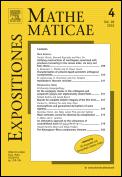
|
Symplectic field theory (SFT) is a collection of homology theories that provide invariants for contact manifolds. We give a proof that vanishing of any one of either contact homology, rational SFT or (full) SFT are equivalent. We call a manifold for which these theories vanish "algebraically overtwisted". |
2009
| Klaus Niederkrüger Federica Pasquotto Desingularisation of orbifolds obtained from symplectic reduction at generic coadjoint orbits Int. Math. Res. Not. IMRN (2009), no. 23, Art. ID rnp95, 4463-4479. |
|

|
Symplectic reduction is a technique that can be used to decrease the dimension of Hamiltonian manifolds. Unfortunately, this only works under strong assumptions on the group action, and in general, even for a compact Lie group, the reduction at a coadjoint orbit that is transverse to the moment map will only yield a symplectic orbifold. In this article, we show how to construct resolutions of symplectic orbifolds obtained as quotients of presymplectic manifolds with a torus action. As a corollary, this allows us to desingularize generic symplectic quotients for compact Lie group actions. More precisely, if a point in the Lie coalgebra is regular, that is, its stabilizer is a maximal torus, then we may apply our desingularization result. Regular elements of the Lie coalgebra are generic in the sense that the singular strata have codimension at least three. Additionally, we show that even though the result of a symplectic cut is an orbifold, it can be modified in an arbitrarily small neighborhood of the cut hypersurface to obtain a smooth symplectic manifold. |
| Klaus Niederkrüger Federica Pasquotto Resolution of symplectic cyclic orbifold singularities J. of Symplectic Geom. 7 (2009), no. 3, 337-355. |
|
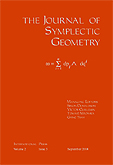
|
In this paper we present a method to obtain resolutions of symplectic orbifolds arising as quotients of pre-symplectic semi-free S1-actions. This includes, in particular, all orbifolds arising from symplectic reduction of Hamiltonian S1-manifolds at regular values, as well as all isolated cyclic orbifold singularities. As an application, we show that pre-quantisations of symplectic orbifolds are symplectically fillable by a smooth manifold. DISCLAIMER: Contrary to what is claimed in "Symplectic resolutions, Lefschetz property and formality" by G. Cavalcanti, M. Fernández, and V. Muñoz, their result does not render our construction useless. The main innovation in their resolution method consists in only studying orbifolds with isolated singularities and ignoring more difficult singularities. |
2007
| Klaus Niederkrüger Ferit Öztürk Brieskorn manifolds as contact branched covers of spheres Period. Math. Hungar. 54 (2007) 85-97. |
|
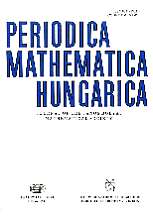
|
We show that Brieskorn manifolds with their standard contact structures are contact branched coverings of spheres. This covering maps a contact open book decomposition of the Brieskorn manifold onto a Milnor open book of the sphere. |
| Otto van Koert Klaus Niederkrüger Every contact manifold can be given a non-fillable contact structure Int. Math. Res. Not. IMRN (2007), no. 23, Art. ID rnm115, 22 pages. |
|

|
Recently Francisco Presas Mata constructed the first examples of closed contact manifolds of dimension larger than 3 that contain a plastikstufe, and hence are non-fillable. Using contact surgery on his examples we create on every sphere S2n-1, n>1, an exotic contact structure ξ- that allows us to embed a plastikstufe. As a consequence, every closed contact manifold M (with exception of S1) can be converted by taking the connected sum of (M,ξ)# (S2n-1,ξ-) into a contact manifold that is not (semi-positively) fillable. |
2006
| Klaus Niederkrüger The plastikstufe: A generalization of the overtwisted disk to higher dimensions Algebr. Geom. Topol. 6 (2006) 2473-2508. |
|

|
In this article, we give a first prototype-definition of overtwistedness in higher dimensions. According to this definition, a contact manifold is called overtwisted if it contains a plastikstufe, a submanifold foliated by the contact structure in a certain way. In three dimensions the definition of the plastikstufe is identical to the one of the overtwisted disk. The main justification for this definition lies in the fact that the existence of a plastikstufe implies that the contact manifold does not have a (semipositive) symplectic filling. |
| Klaus Niederkrüger 5-dimensional contact SO(3)- and SU(2)-manifolds and Dehn twists Geom. Dedicata 117 (2006), 85-110. |
|
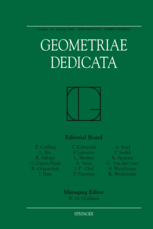
|
In the first part of this paper the five-dimensional contact SO(3)-manifolds are classified up to equivariant coorientation preserving contactomorphisms. The construction of such manifolds with singular orbits requires the use of generalized Dehn twists. We show as an application that all simply connected 5-manifolds with singular orbits are realized by a Brieskorn manifold with exponents (k,2,2,2). The standard contact structure on such a manifold gives right-handed Dehn twists, and a second contact structure defined in the article gives left-handed twists. In an appendix we also describe the classification of five-dimensional contact SU(2)-manifolds. |
2005
| Otto van Koert Klaus Niederkrüger Open book decompositions for contact structures on Brieskorn manifolds Proc. Amer. Math. Soc. 133 (2005), 3679-3686. |
|
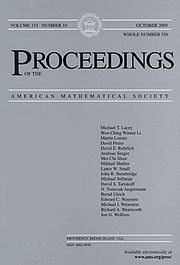
|
In this paper, we give an open book decomposition for the contact structures on some Brieskorn manifolds, in particular for the contact structures of Ustilovsky. The decomposition uses right-handed Dehn twists as conjectured by Giroux. |
All articles may also be found on the arXiv .
Other
-
Klaus Niederkrüger On fillability of contact manifolds Habilitation à diriger des recherches, Toulouse 2013 
The aim of this text is to give an accessible overview to some recent results concerning contact manifolds and their symplectic fillings. In particular, we work out the weakest compatibility conditions between a symplectic manifold and a contact structure on its boundary to still be able to obtain a sensible theory (Chapter II), furthermore we prove two results (Theorem A and B in Section I.4) that show how certain submanifolds inside a contact manifold obstruct the existence of a symplectic filling or influence its topology. We conclude by giving several constructions of contact manifolds that for different reasons do not admit a symplectic filling.
-
Klaus Niederkrüger Higher dimensional contact topology via holomorphic disks. published in Contact and Symplectic Topology, Bolyai Society Mathematical Studies, Vol 26 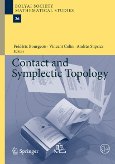
The aim of this notes is to explain some non-fillability results in higher dimensional contact topology, which are closely related to the question of how to define overtwistedness. We start with an overview of some basic examples and theorems known so far, comparing them with analogous results in dimension three. We will also describe an easy construction of non-fillable manifolds by Fran Presas. Then we will explain how to use holomorphic curves with boundary to prove the non-fillability results stated earlier. No a priori knowledge of holomorphic curves will be required; though many properties will only be quoted.
-
Klaus Niederkrüger Compact Lie group actions on contact manifolds Ph.D. thesis, Köln 2005 
The first part of the thesis contains an exposition of S1-actions on 3-manifolds, including the classification of 3-dimensional contact S1-manifolds. The known classification results of 4-dimensional symplectic SO(3)- and SU(2)-manifolds are reproved, before the main result, the classification of 5-dimensional contact SO(3)-manifolds is worked out.
-
Klaus Niederkrüger Eine Präsentation der polynomialen Poisson Algebra auf der 2-Sphäre (A presentation of Poisson algebra on the 2-sphere), diploma thesis, Aachen 1999 
My diploma thesis consisted in giving a (finite) set of generators for the Poisson algebra on the sphere, and a set of necessary relations (similarly to a finitely presented group).
People
- Frédéric Bourgeois
- Hansjörg Geiges
- Paolo Ghiggini
- Otto van Koert
- Sam Lisi
- Patrick Massot
- Emmy Murphy
- Ferit Öztürk
- Federica Pasquotto
- Olga Plamenevskaya
- Francisco Presas Mata
- Ana Rechtman
- Felix Schlenk
- András Stipsicz
- Chris Wendl
References
- Yakov Eliashberg Classification of overtwisted contact structures on 3-manifolds Invent. Math. 98 (1989), no. 3, 623-637.
- Francisco Presas A class of non-fillable contact structures Geom. Topol. 10 (2006), 1373-1389.
- Emmy Murphy Loose Legendrian Embeddings in High Dimensional Contact Manifolds arXiv (2012) 1201.2245
- Matthew Strom Borman Yakov Eliashberg Emmy Murphy Existence and classification of overtwisted contact structures in all dimensions Acta Math. 215 (2015), no. 2, 281-361
- Roger Casals Emmy Murphy Francisco Presas Mata Geometric criteria for overtwistedness arXiv math.SG:1503.06221
